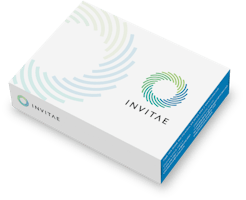
Invitae Alkaptonuria Test
Test code: 06140 •
Test description
The Invitae Alkaptonuria test analyzes the homogentisate 1,2-dioxygenase (HGD) gene which is associated with alkaptonuria (AKU). Genetic testing of this gene may confirm a diagnosis and help guide treatment and management decisions. Identification of disease-causing variants can also aid in determining carrier status and diagnosis of at-risk relatives.
Any individual presenting with a suspected diagnosis of alkaptonuria based on clinical presentation should be tested for HGD. There is no validated HGA test in blood.
Ordering information
Turnaround time:
10–21 calendar days (14 days on average)New York approved:
YesPreferred specimen:
3mL whole blood in a purple-top EDTA tube (K2EDTA or K3EDTA)Alternate specimens:
Saliva, buccal swab, and gDNA are also accepted.Learn more about specimen requirementsRequest a specimen collection kitClinical description and sensitivity
Clinical description:
Alkaptonuria is a rare inborn error of metabolism that results in the accumulation of the intermediary, homogentisate, that is released from the liver into the bloodstream and is excreted through the urine. In contact with oxygen in the air, homogentisate turns into a dark pigment known as alkapton that confers the urine of alkaptonuric patients its characteristic color. The dark urine color may present as early as childhood.
Homogentisate also accumulates in the connective tissues, where it oxidizes and polymerizes, conferring a characteristic ochre coloration known as ochronosis. This deposition is cumulative, being more striking in the dermis of sweat glands, ear cartilages and the sclera of the eye. This visible ochronosis is usually manifested in the 4th decade of life. With age the deposition of alkapton in the cartilage of the larger joints causes their degeneration. This arthrosis (ochronotic arthropathy) represents the most common clinically relevant symptom of the disease and usually occurs in the 3rd o 4th decade of life of the patient. Other secondary symptoms are caused by ochronotic deposits in kidney, prostate and cardiac valves. Ochronotic deposits in prostate may lead in the 4th decade of life to severe prostate obstructions that may require prostatectomy. Obstruction of the kidneys are also observed in the 5th and 6th decade of life. Obstruction of the kidneys may cause the increase of homogentisate in the plasma and tissues, and may also lead to renal failure. The accumulation of the ochronotic pigment has been observed in cardiac valves where it has been occasionally implicated in arteriosclerosis and aortic stenosis.
There is no formal treatment for the disease. Dietary restriction of phenylalanine and tyrosine intake to reduce the homogentisate production may reduce the progression of the symptoms. The intake of ascorbic acid has been reported to reduce the oxidation of homogentisate into alkapton.
Assay information
Invitae is a College of American Pathologists (CAP)-accredited and Clinical Laboratory Improvement Amendments (CLIA)-certified clinical diagnostic laboratory performing full-gene sequencing and deletion/duplication analysis using next-generation sequencing technology (NGS).
Our sequence analysis covers clinically important regions of each gene, including coding exons and 10 to 20 base pairs of adjacent intronic sequence on either side of the coding exons in the transcript listed below, depending on the specific gene or test. In addition, the analysis covers select non-coding variants. Any variants that fall outside these regions are not analyzed. Any limitations in the analysis of these genes will be listed on the report. Contact client services with any questions.
Based on validation study results, this assay achieves >99% analytical sensitivity and specificity for single nucleotide variants, insertions and deletions <15bp in length, and exon-level deletions and duplications. Invitae's methods also detect insertions and deletions larger than 15bp but smaller than a full exon but sensitivity for these may be marginally reduced. Invitae’s deletion/duplication analysis determines copy number at a single exon resolution at virtually all targeted exons. However, in rare situations, single-exon copy number events may not be analyzed due to inherent sequence properties or isolated reduction in data quality. Certain types of variants, such as structural rearrangements (e.g. inversions, gene conversion events, translocations, etc.) or variants embedded in sequence with complex architecture (e.g. short tandem repeats or segmental duplications), may not be detected. Additionally, it may not be possible to fully resolve certain details about variants, such as mosaicism, phasing, or mapping ambiguity. Unless explicitly guaranteed, sequence changes in the promoter, non-coding exons, and other non-coding regions are not covered by this assay. Please consult the test definition on our website for details regarding regions or types of variants that are covered or excluded for this test. This report reflects the analysis of an extracted genomic DNA sample. In very rare cases, (circulating hematolymphoid neoplasm, bone marrow transplant, recent blood transfusion) the analyzed DNA may not represent the patient's constitutional genome.
You can customize this test by clicking genes to remove them.
Primary panel
Question about billing?
Find answers